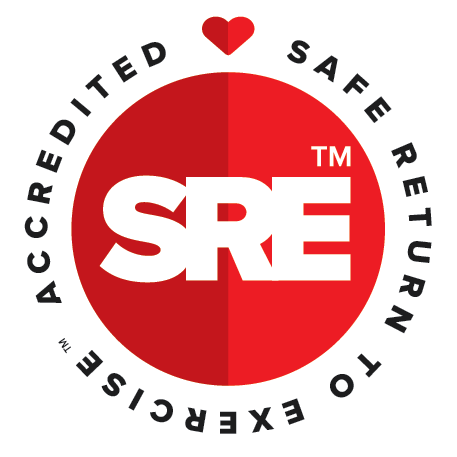5 ways to build a positive relationship with food and exercise as a mum

In a world where we are constantly bombarded with messages about what we should do to be our so-called “healthiest” or “best” self, it can get downright confusing at times.
It is easy to feel like we are just simply not doing enough when it comes to our health and fitness.
To help break it down and remove any overwhelm, I have compiled 5 not-so-obvious ways to foster a positive relationship with food and exercise as a mum.
1. Ditch diets and food rules!
Research shows that 95% of intentional weight loss attempts fail! And that’s not due to a lack of willpower either. It is biological! Most people will start to regain weight within the first year and be back to where they started within 2-5 years (Miller, 1999 *). Two-thirds of people end up heavier than they were before they began.
A large-scale 2015 study reviewing 9 years of data showed that maintaining just a 5% weight loss was rare (Fildes et al, 2015 *). More recently, a 2018 review further reinforced that 95% of weight loss attempts lead to regaining all the lost weight and often more within 2-5 years (O’Hare and Taylor, 2018 *)
If these statistics are not alarming enough, every time you diet not only does it become increasingly harder to lose weight, the weight gain will increase each time as your body fights to protect you by slowing your metabolism and pushing up your set point weight range.
Not only is long-term weight loss extremely rare, it has a significant negative impact on our mental and physical health. Something we can most certainly do without as a mum! The lose weight, gain weight, lose weight, gain weight cycle, known as weight cycling, has the potential to be far more damaging to our health than simply living in a larger body.
Diet culture tells us we should want to live in a thinner body because it is “healthier” or somehow more worthy or cause for celebration. The truth is, for many, the process of intentional weight loss is not “healthful” at all. It just sets us up for feeling like we have failed. It can feel like an exhausting and endless cycle.
Also be aware of “diets in disguise” If it involves food rules about what or when you can eat or promises weight loss as a result of “lifestyle” changes, it’s a diet.
So, if not dieting, then what?
Intuitive Eating
We were all born intuitive eaters but somewhere along the line, thanks to diet culture and the food “rules” we collect along the way, we lose touch with that intuition. Intuitive Eating was initially developed by two US dieticians, Evelyn Tribole and Elyse Resch and provides an evidence-based process for developing a positive relationship with food and your body. To find out more, reading or listening to the book Intuitive Eating is a great place to start.
2. Avoid treating exercise as an “earn and burn” tool for the food you ate or intend to eat
Viewing exercise this way does not foster a positive relationship with exercise, food or our body. Exercise soon becomes a chore and we can often end up pushing ourselves to a point where we ignore warning signs that we are doing too much or taking part in exercise that our body is simply not ready for at this point in time. All in pursuit of an aesthetic goal.
Warning signs can include constant fatigue, not recovering well between workouts, muscle soreness, niggles or injuries, incontinence, feeling under the weather or even guilty or anxious about resting.
Finding ways to move that you enjoy and actually look forward to is key to developing consistent exercise habits. It doesn’t have to involve structured exercise in a gym environment. Think outside the box and move for fun!
It could include dancing, walking the dog or with a friend, a family bike ride, playing a game in the backyard with the kids, swimming or horse riding. The options are endless! Finding the movement you truly enjoy might involve some trial and error at first and of course may change from time to time.
Maybe you can recall a type of physical activity you enjoyed as a kid? Perhaps before exercise became a way to manipulate how you look?
3. Understand why your 6-week postnatal check is not a “green light” to return to exercise as though nothing has changed or pick up from where you left off pre-pregnancy or birth
A thorough assessment of your pelvic floor and abdominal wall with a Women’s Health Physiotherapist could literally change the way you experience motherhood and is most likely the missing link in your safe return to exercise.
Even if you are YEARS into your motherhood journey, you could still be living with contraindications to exercise that can be linked back to pregnancy and childbirth. These could include but are not limited to things like bladder or bowel incontinence, urgent need to wee (urge incontinence), back or pelvic pain, a heavy or dragging sensation in the vagina (perhaps there is lump or bulge you can see or feel?) These are symptoms that should never be ignored or simply dismissed as part of being a mum.
Ideally, a visit with a Women’s Health Physiotherapist would happen at around 6-weeks postnatal, however, it is NEVER too late to make the appointment. Even if you have already returned to exercise, it’s best to get on top of that thing that just doesn’t feel quite right or for peace of mind that everything is in fact OK! Sometimes pelvic floor dysfunction does not present with any obvious symptoms
Head to our Find a Physio directory if you need health finding a Women’s Health Physiotherapist in your area.
4. Check that your PT or Group Fitness Instructor is accredited to work with postnatal women
Not all personal trainers or group fitness instructors are accredited to work with pregnant and post-natal women. In fact, there are few who are. It is not a standard part of their training despite the fact that, in Australia, 77% of women over the age of 15 are mums.
If you are not sure, you are well within your right to ask what their qualifications are with regard to working with pregnant or postnatal women. Do they ask questions about your birth story, postnatal recovery or if you have seen a Women’s Health Physiotherapist? If not, then perhaps they are not the right fit for you at this point in time.
You can find or request a suitably qualified Mum Safe trainer in your area by searching our Find a Trainer directory.
5. Remember “health” is not a size AND weight loss is not a cure for negative body image
It is Diet Culture that has conditioned us to believe smaller is “better” or “healthier”.
It is these beliefs and assumptions that contribute to weight stigma which is far more damaging to our health than simply living in a larger body. They also make us fear gaining weight.
Another common misconception is that weight loss is a cure for negative body image. Whilst it certainly might feel like it is at first, a continued hyper-focus on the way our body looks usually leads to further body image distress.
Here are some of my favourite anti-diet and body image resources (listed in no particular order):
- UNTRAPPED – an online, self-paced course to help you bust out of diet prison
- More than a Body by Lindsay and Lexie Kite
- Anti-Diet by Christy Harrison
- Body Respect by Lindo Bacon and Lucy Aphramore
- The F*ck It Diet by Caroline Dooner
Sheridan runs My Fit Mumma in Hobart, Tasmania. To find out more about her and get in touch, click here.
You can also find her on Instagram.
Studies referenced in this article:
Sheridan Wakefield runs My Fit Mumma in Tasmania, . Learn more about Sheridan and Book your Trial today.
You can also find her on Instagram.
